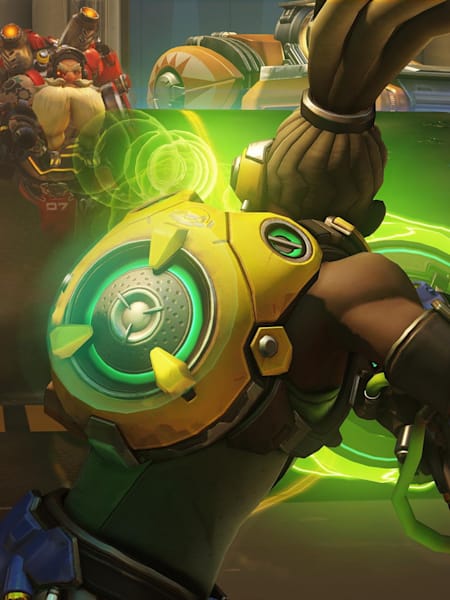As Overwatch and its Fall 10th (seriously, Fall 10th?) beta come ever closer, the game has continued to find itself under the microscope of excited fans. One particular gaming community is especially interested in the future of Overwatch: players of popular shooter Team Fortress 2. The two intersect in several ways. They both share point-capture and escort game modes, have specialized characters that are designed for a certain purpose, and emphasize teamwork in ways that live outside the traditional structure of FPS shooters.
Given their similarities, the competitive Team Fortress 2 community may have some of the best insight into how Blizzard’s foray into team shooters will pan out. Many top TF2 names have voiced their excitement for the title, and what it can become. Listen as these top professionals give their take on Overwatch by taking a look back at history – and pointing a mindful eye to the future.
Team Fortress 2: Where did it come from?
Team Fortress 2 is a game with a curious history, from both a developmental and competitive standpoint. The original Team Fortress was a Quake mod, built in 1996. Half-Life developer Valve was so impressed by the title that they hired the mod team to port it to PC as a complement to their breakout hit, Half-Life. Team Fortress 2 was developed by the same team and released in 2007, where it quickly garnered a sizable competitive following.
The engine that Team Fortress 2 runs on, the Source engine, is heavily physics based. Team Fortress 2 is no different, and as such it attracts players looking for a more technical experience. Many of the well-played classes have unique, non-traditional movement options that even the best players have to constantly practice. Carl ‘enigma’ Yangsheng, a successful Scout player who has been competing on top teams since 2007, has always appreciated this aspect of the game. “The fact that TF2 runs on a derivative of Quake engine, however distant, means that the mechanical skill ceiling alone is unattainably high, allowing a ton of creativity in how you approach and execute fights. What's kept me drawn to the game for so long is that there's always something very concrete you can work on improving at.”
But as much fun as it is to play at both a casual and competitive level, Team Fortress 2 competitions boil down to somewhat unintuitive strategies. Major tournaments are primarily hosted in 6v6 format, with teams that are built up of two groups: the ‘combo’ and the ‘flanks.’ Combo groups are regularly made up of Soldiers, Demomen and Medics, moving in a pack to concentrate fire and create a push, while the flanking characters consist of Scouts and roaming Soldiers, keeping an eye on the field and preventing attacks on the combo from unexpected angles. The occasional Sniper may make an appearance, but outside of that… don’t expect balanced class representation. There’s a lot more to cover, but even this simplified description makes one thing clear: competitive play is nothing like the pub matches many are accustomed to.
Brandon ‘Seagull’ Larned, a top Soldier who has recently played for well-regarded team Classic Mixup, sees this as something that has limited visibility of his beloved scene. “TF2's main issue is that it was created in an era where balance wasn’t really considered by developers, and therefore TF2 players were forced to haphazardly ‘balance’ the game by creating an arbitrary ruleset which separated us from the rest of the game. It was also released right before matchmaking became widespread - with no way for the general player base to easily hop into competitive play, the scene's growth has been very restricted.”
Learning from history
Team Fortress 2 is a great game with some unusual obstacles that have kept it from achieving the eSports success some believe it deserves. So how can Overwatch avoid a similar fate? In many ways, it already has. The first sign of this is Overwatch’s default match settings, which are conspicuously similar to a certain other community. “[Overwatch has] already avoided the major pitfall of competitive TF2 by ensuring that the mode everyone plays out of the box will be the same or at the very least similar the version that'll be played competitively,” says enigma.
Overwatch’s hero design also appears to mitigate the issue of underused and unused classes that Team Fortress 2 struggled with. The versatility of heroes in Overwatch inversely prevents them from any one hero being overly generalist. Seagull is excited to see several different heroes out on the playing field. “The great thing about Overwatch is that it's taking the core FPS gameplay and putting heavy emphasis on team strategy with regards to the different heroes and how they synergize, especially with ultimates. We never had that option in TF2, as the versatile classes were almost always the best in all situations.”
With heroes being designed with 6v6 gameplay in mind, an Overwatch hero that does less by themselves and more with a group or partner can still be an incredibly valuable part of a team composition. There will always be imbalance and shifts in competitive metas, but Overwatch is starting in a great spot.
Let’s bring it together
Fall 10th is still on its way, and there are still several facets of Overwatch that have yet to be revealed. But what has been revealed shows that Blizzard has been paying close attention to team shooters of the past – and that they’re putting some real effort into avoiding the pitfalls of its predecessors. Overwatch is a team shooter with a capital T. And that’s a really good thing.
For more features on Overwatch, follow us on Twitter at @redbullESPORTS






